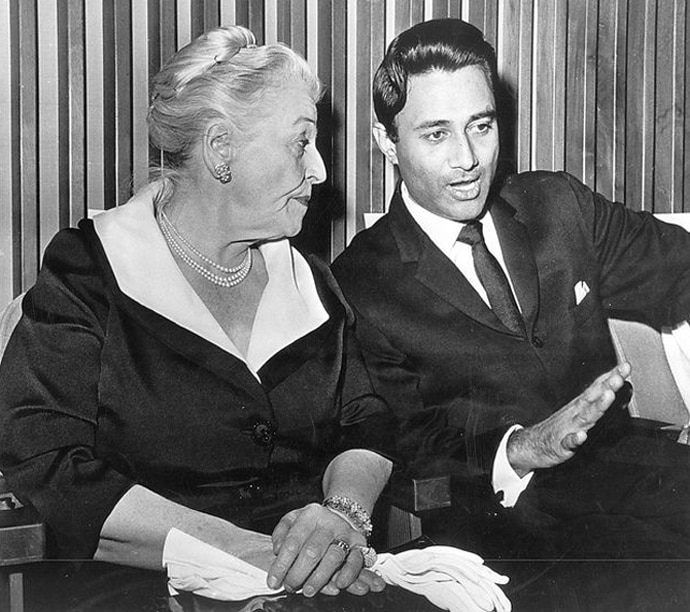
In the mid-1960 one of the most publicized Indian movies was Dev Anand’s ‘Guide’. It was a colored movie that stood out in the black and white era of the Bombay films; its story was based on a novel by R.K Narayan who told Indian stories in the English language; the movie had two versions Hindi and English and above all the English adaptation was done by a ‘big’ American author. Back then in Pakistan the syllabus of English literature listed mostly books by British authors, hence, I was ignorant about American authors.
It was only in the 1990s at the Olin Library, Cornell University in Ithaca New York where I learned that the big American author of ‘The Guide’ was Pearl S. Buck. With this discovery, my phase of reading American novels began and I found Buck to be a great storyteller. Her writing ranges from the biographies of her parents to a variety of subjects but she is mostly known for The Good Earth, a novel that introduced China’s socio-cultural and political turmoil to the world and the one that led her to win the Pulitzer Prize in 1932. It is said many Americans came to know about hunger, poverty, crime, dacoity and the details of the great Chinese revolution through her book.
Since Buck had earned her master’s degree in English literature from Cornell she was still remembered on the campus and here too her most talked-about novel was the Good Earth. In the face of the stormy events described in that masterpiece, her story of a small-time Indian guide was bound to go unnoticed.
Buck authored the Good Earth at the beginning of her career, those were the vibrant years of her life. The Guide (1965) she wrote in the autumn of her life; the former became her internationally known masterpiece and made her a Nobel laureate while the latter failed at the box office and was never released in India. The power behind the Good Earth’s story came from her knowledge of growing up in China from infancy to the middle-age; before she learned English she had learned Chinese from her Buddhist Nanny. Compared to that rich experience her exposure to India was only through a few visits. However, her fascination for India’s colorful culture combined with her new passion-the film production might have led Buck to write the screenplay of The Guide. She had already partnered with Tad Danielewski to co-produce the Big Wave, a movie based on her novel. It was a foreign theme made in collaboration with a Japanese film company hence the idea of a similar collaboration with an Indian producer was no surprise. Soon that idea brought them in contact with Dev Anand who was keen to go international. However, for an American-Indian co-production, the problem was a good story. Buck had not yet written Mandala, a novel set in India, but luckily, Dev Anand discovered R.K. Narayan’s novel Guide.

Buck, who loved exploring eastern cultures and history, must have been delighted to read Narayan’s story. If she had lived in China and crafted a saga; she had also visited India and explored its exotic aspects and Narayan’s narration was bound to enhance her imagination. Guide is a bold love triangle with unconventional characters played by Dev Anand as the guide, Kishore Sahu the archaeologist husband and Waheeda Rehman, his wife who dreams to be a dancer. It is often said that the film has the feel of a travelog, but with glimpses of ancient and modern India; art and dance spiced with archaeology, spirituality and adultery, it was more than a travel guide. She worked enthusiastically on details such as improving Waheeda Rehman’s English diction and she must have foreseen The Guide as a great success when she asked Lord Mountbatten if Queen Elizabeth could be invited for the premiere.
Contrary to Buck’s dream The Guide failed. On February 10, 1965, soon after its premiere New York Times gave a disastrous review. Narayan felt that his story was not projected the way it was told in his novel, he described the movie as the ‘Misguided Guide.’ and the movie was never released in India. However, its Hindi version titled ‘Guide’ (without the indefinite article) did very well and is considered a classic. Both the versions are available on YouTube.
Today Pearl Buck’s house in Bucks County Pennsylvania is a National Historic Landmark, it tells the story- not only of a Nobel Laureate but also of a great social worker. The old stone house standing on 67-acre farmland is large enough to include a writing center which must have inspired many to write. But for many in Ithaca, her quaint house in Cayuga Heights is still revered. Buck rented this house in 1932 when her husband came to Cornell for his Ph.D. While he was working on his thesis she was writing the third novel of her trilogy, she had informed the Ithaca Journal in an interview.
In the literary culture of Finger Lakes where the inspiration to write comes from many sources, Buck’s little house in Ithaca inspired Uly Siregar – see, what she says in her article.

